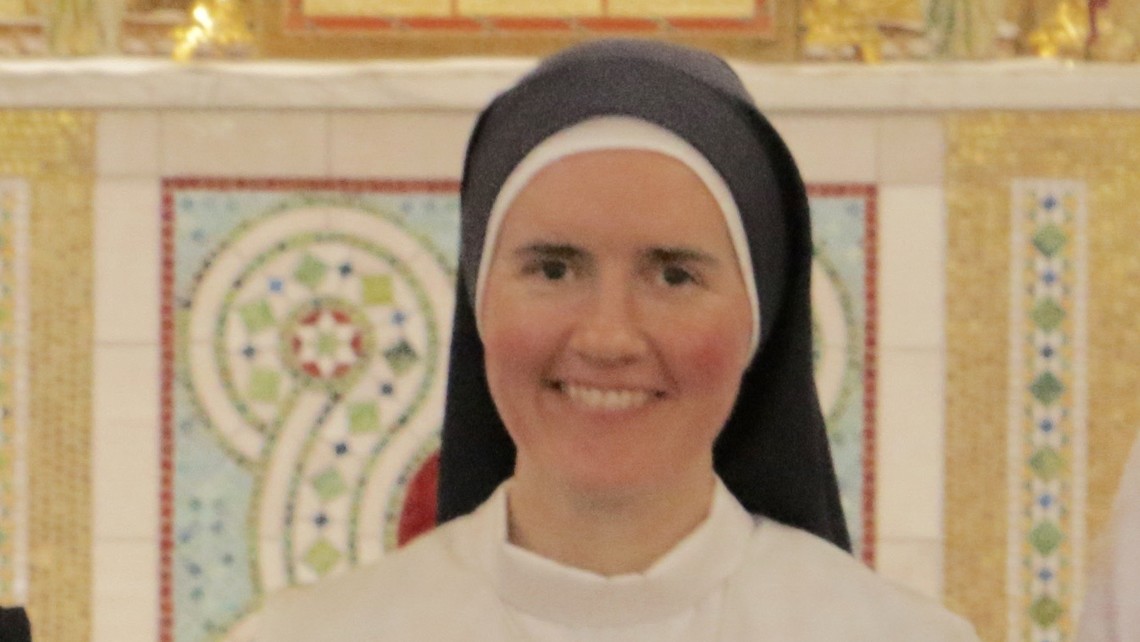
Keeping all these things in our hearts….
By Sister M. Regina
Stole, maniple and chasuble
Once a priest has vested in the amice, alb and cincture, he places on his left forearm a maniple. The maniple is a narrow strip of cloth, often in a design in harmony with the stole and chasuble and always in the liturgical color the priest is wearing. As he places the maniple on his arm, the priest prays: “Let me deserve, O Lord, to bear the maniple of tears and sorrow, so that one day I may come with joy into the rewards of my labors.” When a priest offers the Holy Mass in the Ordinary Form, he is not required to wear a maniple, but he may do so if he chooses. In the Extraordinary Form, the maniple is required. The priest wears the maniple only at Holy Mass, not when administering other sacraments or when offering Benediction of the Blessed Sacrament.
What is the meaning of the maniple? Originally, the maniple was a small towel or handkerchief worn for practical purposes, namely, to wipe away perspiration, or for ornamental uses. It was common for people of all ranks in life to wear ornamental handkerchiefs or cloths The name manipulus was given because it was folded together and carried in the left hand like a small bundle (manipulus).
In the Middle Ages the maniple received various symbolical interpretations. It has become common to understand this vestment a symbol of the bonds which held the hands of the Saviour. In the prayer offered by the priest when putting on the maniple he mentions the cares and sorrows of this earthly life which should be borne with patience in view of the heavenly reward.
The priest next places a stole over his shoulders, and, having kissed the stole, he prays: “Restore to me, O Lord, the state of immortality which I lost through the sin of my first parents and, although unworthy to approach Your Sacred Mysteries, may I deserve nevertheless eternal joy.” The stole is worn by deacons, priests and bishops. It is the sign of the office of the diaconal or priestly office.
At the ordination of a deacon, the bishop places the stole on the left shoulder of the candidate, saying: “Receive from the hand of God the white garment and fulfil thy duty, for God is mighty enough to give thee His grace in rich measure.” A deacon wears the stole hanging on the left shoulder, crossing his chest and then meeting at the right side.
At the ordination of a priest, the bishop draws the part of the stole that rests at the back of the candidate's neck forward over the breast and lays the two ends crosswise, saying: “Receive the yoke of the Lord, for His yoke is sweet and His burden is light.” If the priest is wearing a surplice, as Father Matthew Bartulica does at Benediction, then he wears the stole such that both halves fall down straight. When he wears the stole for Holy Mass, the priest crosses the stole in the front. When a bishop wears a stole as Holy Mass, he never crosses it in the front.
The chasuble is the outermost vestment worn by the celebrant at Holy Mass. It hangs down from the shoulders, in front and behind, down either to the knees or even lower, depending on the style. The vesting prayer for the chasuble is: “O Lord Who has said, ‘My yoke is easy and my burden is light,’ grant that I may carry it so as to obtain Your grace.” The chasuble, stole, maniple and the veil for the chalice (to be described in a future article) are made as a set of vestments, of the same materials, color and design.

